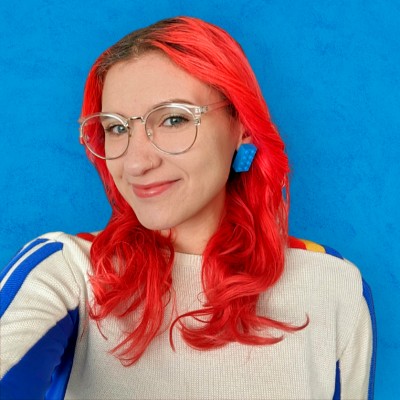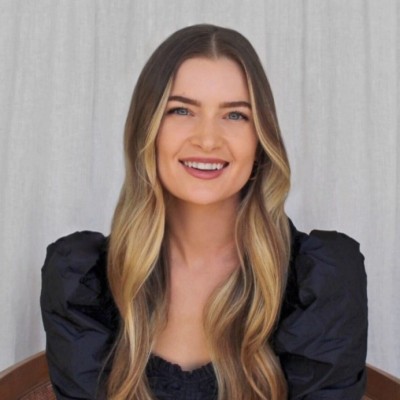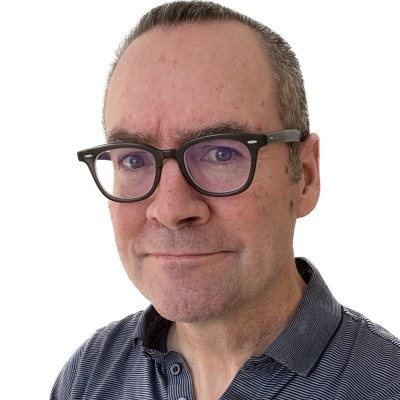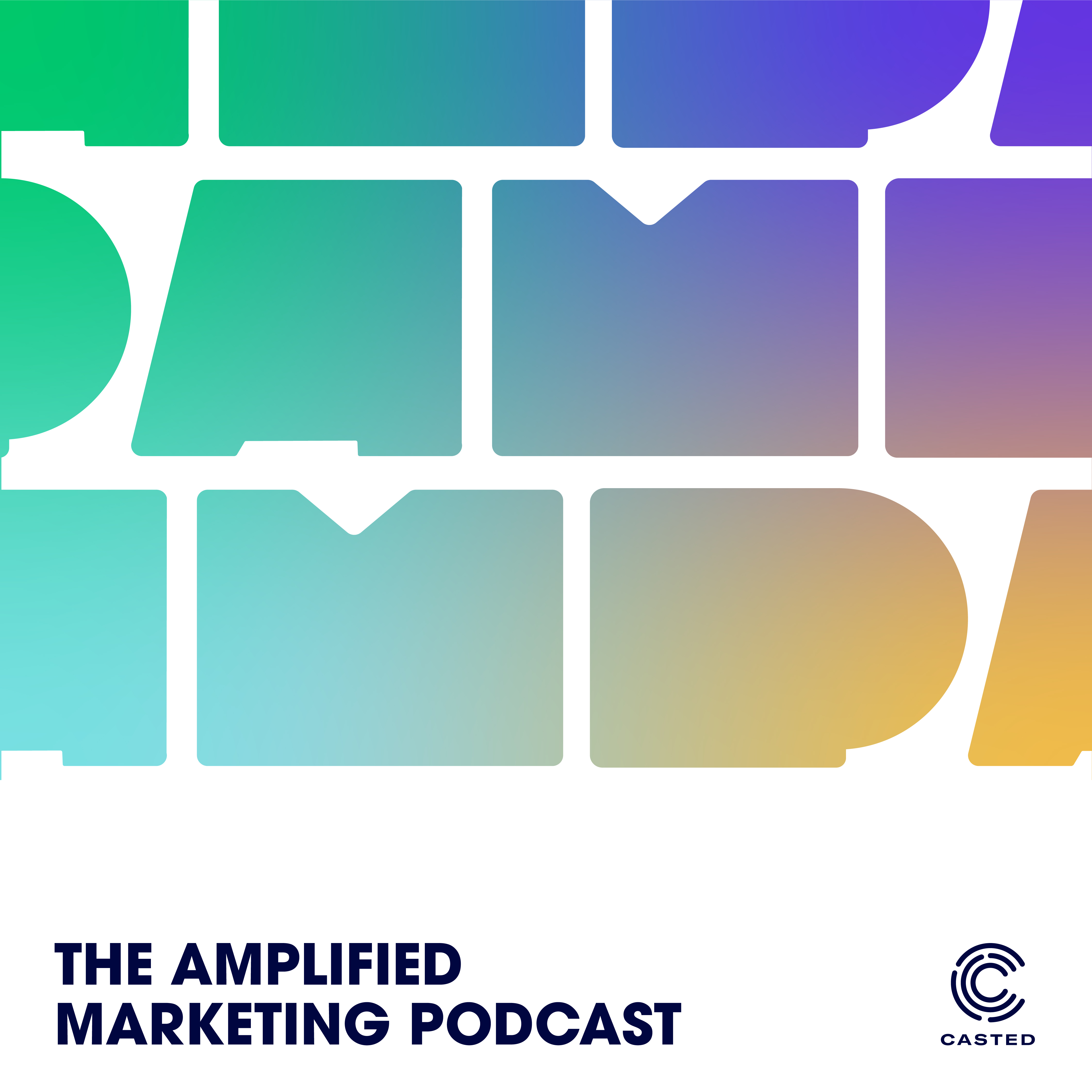How B2B Podcasts Grow Up: How a Content Carousel Will Redefine Your Marketing Strategy
- 0.5
- 1
- 1.25
- 1.5
- 1.75
- 2
Lindsay Tjepkema: Where are all my overwhelmed marketers at? Okay, it's all of you, I know. We've got enough omnichannel strategies to manage, is the podcast really another one that we want to take on? Yes. A big fat yes, trust me. But we're going to make it way less overwhelming for you, I promise. You don't have the manpower, the resources or the time to build content for your diverse audience, I get it, but think again. I'm Lindsay Tjepkema, a lifelong marketer and proud CEO and co- founder of Casted, the B2B marketing platform for brand podcasters. And I've teamed up with experts across the top sales and marketing teams in the world to detail each of the five stages of this maturity curve, and what you can do to launch and grow a show with confidence. This is How B2B Podcasts Grow Up, an original series from Casted. You learn about building the team, the process, and the personal skills necessary to grow your podcast well beyond a single RSS feed, because that's what we're all after, right? We want to make a genuine connection with our audience and make the show so appetizing that they share it with others that they know would be interested. In this episode, we talk about how to do just that, by meeting your network and your network's network and your network's network's network where they are. That's right, episode two is all about building an omnichannel approach to your podcast, not just audio in your favorite podcast platform. So build a show designed to resonate with every kind of learner and every kind of customer you have. Wait a second, what's all this for? Why do we need to build an omnichannel approach in the first place? Well, good question. The simple answer is growth. I sat down with some incredible B2B podcasting rock stars to hear how they think about growing their podcasts, and wrapping them up in a larger content marketing strategy. So it's not just my opinion, listen to all these other experts. We're going to hear in this episode their advice for how to make it happen. But wait, Meg Johnson told me to pause before we start talking about growth. Without the right human skills on your podcast team, it's impossible to grow.
Meg Johnson: Everyone has a personal brand whether they realize it or not. I think how you leave someone feeling after you meet with them is your personal brand, and that could be in a meeting, that could be an email signature, that could be how you follow up with them after coffee, or how you say hi to them in the hallway. I think all these things come together to create what a personal brand is, and for everyone it's not just blasting out social media and broadcasting. So huge amounts of opportunity there to build an authentic, sustainable community that will really help you grow in a way that will actually benefit you in the long run, and not just be following growth trends. So that's kind of like the first big takeaway that I would say, is unpacking what authenticity is. And then I would say the other thing is don't let distribution distract from the listener experience. I started to get into this a little bit, but it's easy to get caught up in ways to share your podcast. So just like I was saying, it's easy to get caught up into the growth hacking and the trends of what people are doing to make your show have wider reach, so to speak. But don't forget the basics. Again, go back to your intent. Is your intro impactful? I think things like that, where you can really focus on getting the key takeaways of the episode in the first minute or two, really helps for listener retention. And I think, more often than not, people are starting to look more at listener retention than just overall listens just because of the way they're calculated. Someone can listen, a podcast listen, might be only a few seconds or 30 seconds or a minute or two of your episode, which could be an hour long, versus if you're getting really high listener retention, that's a way better indicator, letting you know that what you're doing is working and that people really want to spend time with you or your brand.
Lindsay Tjepkema: It's true. Without the right personal approach to your podcast, how can you expect to grow the show and the audience?
Jordan Feise: When I think about why would someone listen to this podcast or this episode even, it's I care about the topic, I care about the company name, it's a big name, I'm curious what they're doing over there, or I have a personal relationship. I know that person, right?
Lindsay Tjepkema: Yeah.
Jordan Feise: And I think with the big- name guests, is that's what you're trying to tap into is the, " I know that person, I've heard of that person." But what we've found is actually some of the best performing episodes are just the topic hits home. So I would say it's reassuring to, hey, if you don't have the budget right now to go out and get all of the big A- list celebrities that you might dream of interviewing, that's totally okay. Focus on what problems does your audience have, and bring on guests that have already walked through them and maybe are coming out on the other side with some learnings, and just give them a place to share.
Lindsay Tjepkema: So why would someone listen to your podcast? You just heard from Jordan Feise at Gong, who recommends going back to the first principles, focus on what problems they have and create credible content that helps them, your audience, overcome those problems? Simple, right? Maybe simple but not easy, but this is exactly what Jordan and her team at Gong put into practice. Growth is no accident. Gong and our expert guests on The Amplified Marketing Podcast put their foot to the pedal and expand their audience and their reach. But what exactly did they do to flex their content muscle and increase listenership? Here's Peter Mahoney, the general manager of Marketing Performance Management at Planful. He talks about the success of their podcast and of their entire content marketing strategy.
Peter Mahoney: So we started the podcast that we have now called The Next CMO. And The Next CMO was an evolution of an original podcast that we started kicking around because we thought it would be interesting to find a way to inexpensively reach out to our audience a little bit more broadly. But what really got the show to take off was the fact that we started by writing a book called The Next CMO.
Lindsay Tjepkema: Smart.
Peter Mahoney: And the book was the centerpiece of what we decided we needed to do to reeducate the market. By doing this, by writing this book and doing all the research behind it, we decided that all of that effort was something we wanted to invest in and amplify in a significant way. So we really created a lot of extensions to the idea of The Next CMO. We started with the book, we have a blog, we have a podcast, and we actually created a community around The Next CMO. And the goal, again, was to really lean into this audience and engage them in all the different ways that we thought would be interesting to engage them in.
Lindsay Tjepkema: Content centerpiece, marketing extensions. What are we going to call this content model? Meg Johnson has a pretty good idea.
Meg Johnson: The next piece of advice I have for you on content marketing is to reuse, repurpose, and repeat. And by doing that, you create what I like to call a content carousel. Now, you might be familiar with this topic as I did go on The Casted Podcast to talk about how OpenView does this, so there are deeper examples in there if you want to go check it out on their blog or on their podcast. But I will give a brief rundown of what I mean by content carousel. The way that I look at it is that all of the pieces of our marketing strategy are like horses on a carousel, or dragons, or rabbits, or whatever a theme carousel you want to have. The first horse is the content, so whatever you're building this content carousel around. In this case, let's use the example of the BUILD Podcast with Blake Bartlett. So horse number one is the podcast, which focuses on bringing in people who are excited to talk to us, and share their insights on something that they're very enthusiastic about. Horse number two is our blog, and so, as you can see, our content fuels our blog. Horse number three is our newsletter. This newsletter then points to horse number four, which is our social media channels. Then, see where I'm going with this, our social media channels, horse number four, goes all the way back to horse number one, which is the content, and that's completing one cycle on the content carousel. The idea here is that you'll get someone to hop on your carousel wherever they see fit. Maybe they're a blog reader, maybe they're a podcast listener, maybe they're following you on social, wherever they find you, again, building that consistency, and wherever they hop on, they're able to continue that journey around the content carousel. And now, before you know it, they're singing your tune. Then, once you have this content carousel, you're able to add a horse, take away a horse, experiment, iterate and improve upon it, while already having these people happily on the carousel, giving you feedback all along the way.
Lindsay Tjepkema: Content carousel, maybe a marketing merry- go- round? Content carousel, trademark that, Meg. Get on it, trust me. Let's go deeper, Meg. You mentioned your unique audience will jump on your content carousel when they resonate with a piece of content in their wheelhouse. For example, I'm a podcast junkie, obviously, so I prefer to listen to a podcast from my favorite brand than watch their YouTube videos. That's my preference. So how did you create different formats and content for your OpenView unique audience?
Meg Johnson: I joined in 2020, and so they already had a huge library of incredible episodes. I inherited this already good podcast and wanted to make it great. So first thing I did was make one consistent host, and the effort behind that was with that and a video series, we would be increasing Blake's visibility in his personal brand by having two multimedia programs coinciding together. So March 2020, we also started our other multimedia series, which is PLG 123, which is primarily a LinkedIn and YouTube- based video series. It's focused on product- led growth news, and Blake gives his hot take every week, it has really fun graphics and is very engaging. It's two minutes or less, but it's kind of be like a snapshot of what's going on hot in tech that week. And actually, we just crossed over a 100 episodes of the PLG 123, which is very exciting.
Lindsay Tjepkema: Yeah.
Meg Johnson: And it's just been so cool to see how far we've come since our 10- minute- long episodes filmed on an iPhone to right now. I feel like we can look at the last maybe 20 or 30 videos and see our style and our voice really come through, which is exciting. And really, the efforts of having both the PLG 123 video series and the BUILD Podcast both being hosted by Blake was to use the two mediums as a way to connect with the people he wants to connect with, but how they want to be connected with. So not everyone is on YouTube or is on LinkedIn wanting to watch a video, but everyone drives a car or goes to the grocery store or is mowing their lawn and could use something insightful to listen to. And so I think that both podcasting and video, while a lot of people try to pit them against each other, I think that they're both really powerful levers, and should be strategically utilized in a way to reach people how they want to be reached.
Lindsay Tjepkema: Perfect. If you want to expand from your podcast into video, Meg is your girl. Kira Singer of Oak Street Funding is also repurposing and is a master at it. Here's how she recommends getting more bang for your podcast buck.
Kira Singer: Let's package everything up that we can and use it also as a way to entice partners to work with us. So we're not just saying you can come on and be a podcast guest, but we'll do a podcast episode of your founder's story, we'll also film a webinar, a podcast, and then all of those things will be transcribed, and our content writer takes the transcription and turns them into blogs. And from those blogs, embedding different audiograms or videograms into them to make them be able to be consumed various ways. And then taking key takeaways, putting them on social media, tagging these leaders, and then sending it out in an email as well. So one conversation with us can help amplify our brand and another person's brand almost sevenfold for each asset, which has been really exciting, not only for us'cause we get so much content out of each asset, but it's great to see how it all works together.
Lindsay Tjepkema: 7X content ROI on each podcast episode, that's bananas. CMO of Planful, Rowan Tonkin, takes a slightly different approach to a similar result. Here's how his team gets even more value of every single executive interview.
Rowan Tonkin: The one thing that you can hang your hat on to as you're doing that is to say, " Look, this is going to be a get one take once, and then we're going to redistribute it in all other places." PR writing calls, social media writing calls, internal blog writing calls, most of those big thought leadership pieces that need to come from execs and people with those really distinct backgrounds and actual thought leadership, they can talk for hours on that without any prep. And if you could just host that one conversation, then you can go and create derivative content for days. You could probably give a really good writer a two- hour conversation with an executive, and they're going to have their content calendar full for a full quarter. But invariably, what happens is a member of the social team will go and ask that exec for a call, and then the PR team will ask that exec for a call, and then the analyst team will ask that exec for a call, and ultimately, this person's just like, " Oh my God, I've said the same narrative over and over for the last week. Why aren't people getting it?"
Lindsay Tjepkema: So this all sounds great in practice, but what are the outcomes? What's the benefit of putting all this work in on the front end? Well, to put it simply, a larger, more diverse audience who's interested in your content and brand. You don't want to turn that down, do you?
Meg Johnson: My final piece of advice for you is to find your people, your community, and learn from them. One of my favorite podcast communities would be the Amplified Marketing Slack group hosted by Casted. There's so much you can learn by talking to folks who have the same pain points as you and are solving for the same problems. We go in there and we chat, share really good hyperspecific podcasting memes that you don't want to miss out on. Overall, I would say that consistency, authenticity, and acceptance is what builds a thriving community and a great brand. I believe the best way to build an authentic brand is through community. The goal of any brand is that their audience feels truly heard and accepted into this community that they're trying to build. And the best way to build a community, in my opinion, is through a podcast. It allows people to feel like they're part of the conversation and that they're, again, your friend, your ally, someone that you can turn to and talk about the stuff that you're excited about. They should feel genuinely connected to the mission of the company and the people behind the brand. They should be able to trust your opinions and turn to you for help.
Lindsay Tjepkema: That was Meg Johnson again. Community is the result, consistency, authenticity, and acceptance. What medium does better than podcasting? But remember, it's not up to you to decide how your content resonates with your audience. Give them the opportunity to hop on board through whichever content mode or format or methodology makes them feel seen, heard, valued, entertained, informed, excited, all the things. Because Gong has built such a strong community around their Reveal Podcast, you shouldn't be surprised to see that Gong the podcast network in your podcast listening app soon.
Jordan Feise: I think eventually the Gong Podcast Network is a part of that inaudible multiple shows. This is definitely still just like in Jordan's brain vision. No-
Lindsay Tjepkema: Just an idea and not an announcement, yeah, mm-hmm.
Jordan Feise: Yeah, exactly, exactly. Thank you. But I do think that would be amazing, as Gong the platform starts to enable more and different audiences and industries, it's going to be a discussion for us to talk about, do we have all those discussions on one podcast? Does that make sense? Are they going to be relevant to the same audience? I'm very sensitive to that, and the audience that we've built up. And here's an easy one, okay, let's say we have Gong for CS or Gong for Marketers, is that all just Gong for Go- To- Market, or do we start splitting that up and having the marketing conversations over here, the CS conversations over here, and the sales conversations over here? Because at the end of the day, those audiences all care about similar things, but when you get in the nitty- gritty, it's a little bit different, right?
Lindsay Tjepkema: Yep.
Jordan Feise: And so we can have more focused conversation.
Lindsay Tjepkema: Like how niche do you want to go? Yeah.
Jordan Feise: Exactly. And I think that's kind of where the magic happens.
Lindsay Tjepkema: As the audience expands, the shows expand to meet their unique interests. Boom, that's multichannel expansion in Stage 4 of the Podcast Maturity Curve in a nutshell. Thanks for listening. This was the second episode of Stage 4 of The Podcast Maturity Curve series, and thanks also to our expert guests, Kira Singer, Meg Johnson, Jordan Feise, Rowan Tonkin, and Peter Mahoney, all for their amazing content marketing and repurposing expertise and knowledge. If you want to hear more from their interviews, search their names and Amplified Marketing Podcast. Keep tuning in for a deep dive in mistakes and lessons learned from these experts' experiences in growing their shows.
DESCRIPTION
Your audience is wildly diverse. Sure, they have similar goals and most are listening for the same reason.
But they learn in different ways. Meaning you have to meet your network and your network’s network where they are.
The second episode of the fourth stage of the podcast maturity curve series How B2B Podcasts Grow Up focuses on how to treat your marketing strategy like a carousel and how to repurpose your content like the pros.
Learn tactics and tips from Kara Singer of Oak Street Funding, Meg Johnson from OpenView Venture Partners, Jordan Feise of Gong and Rowan Tonkin and Peter Mahoney at Planful how they grew their shows. And my insights too!
Today's Guests

Meg Johnson

Jordan Feise

Kira Singer

Rowan Tonkin


